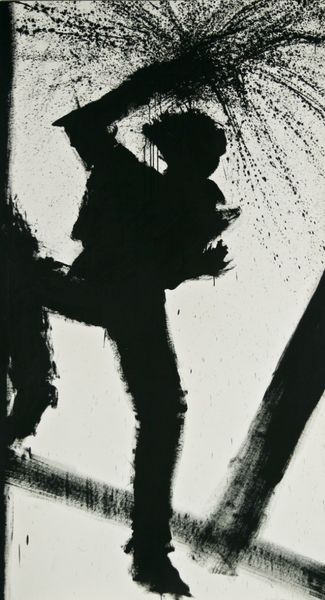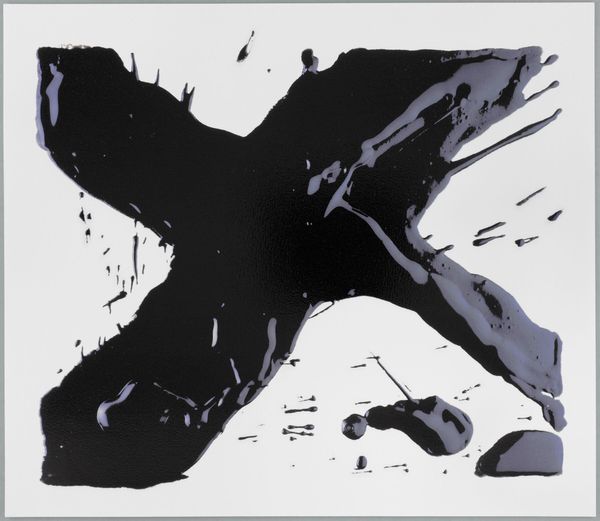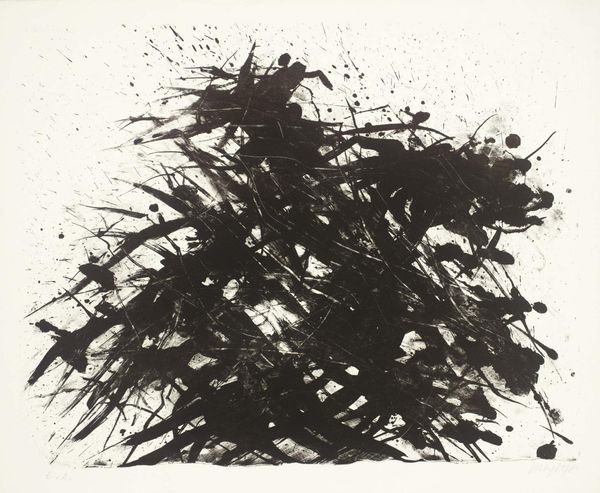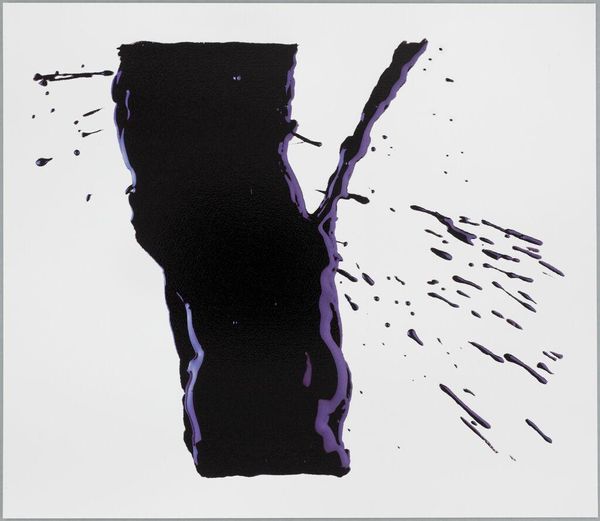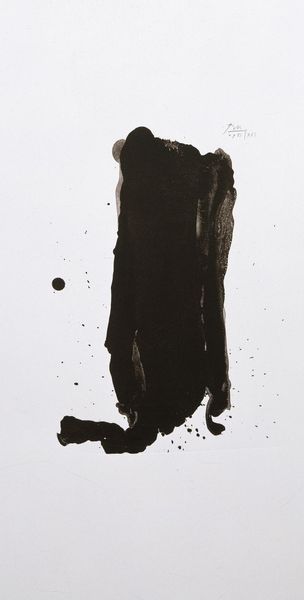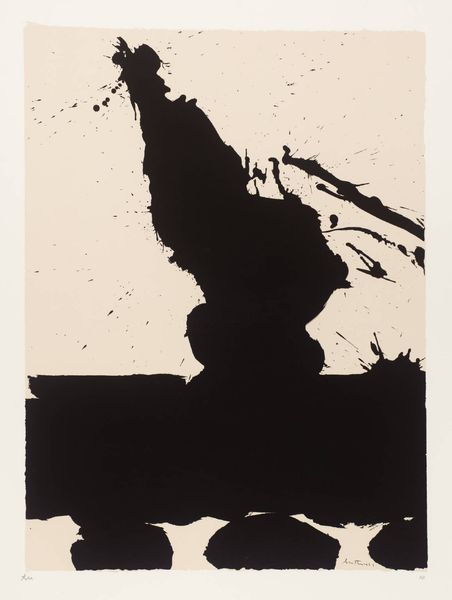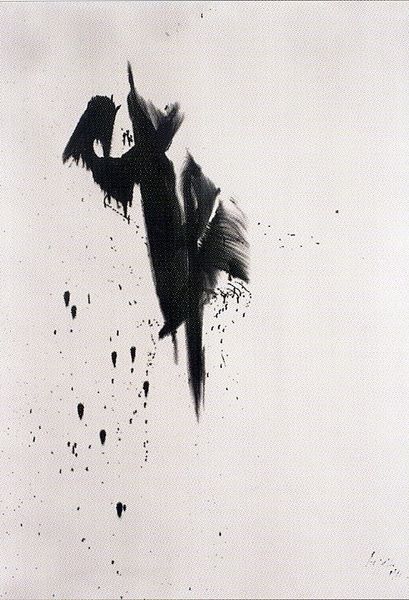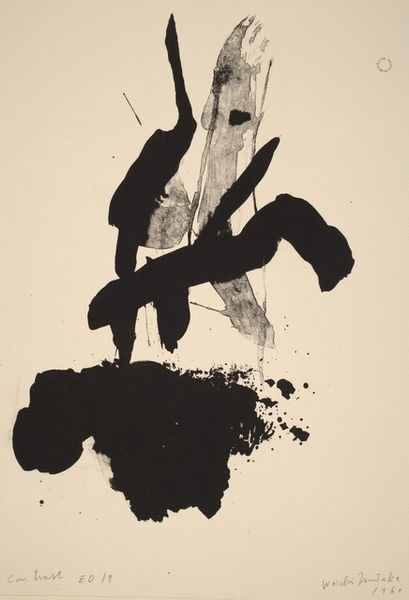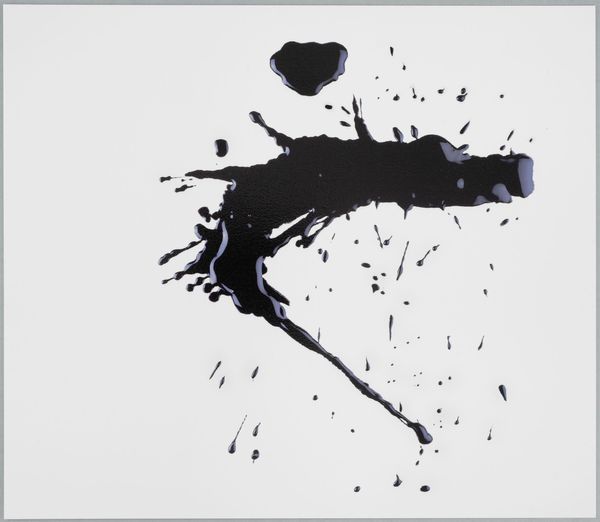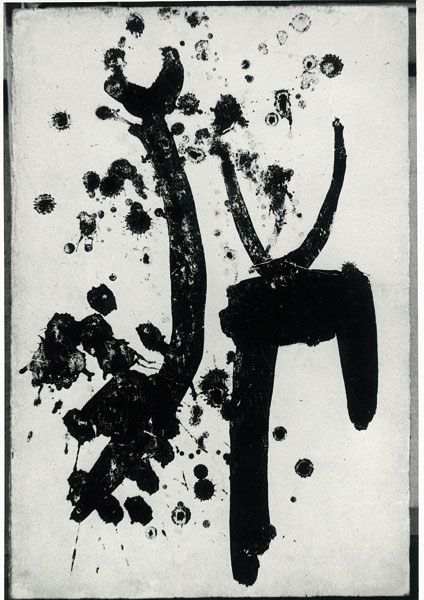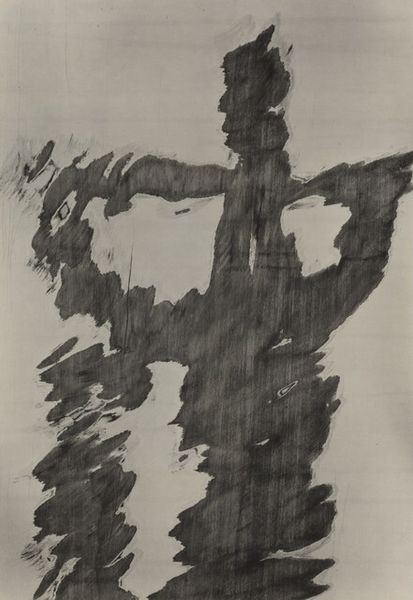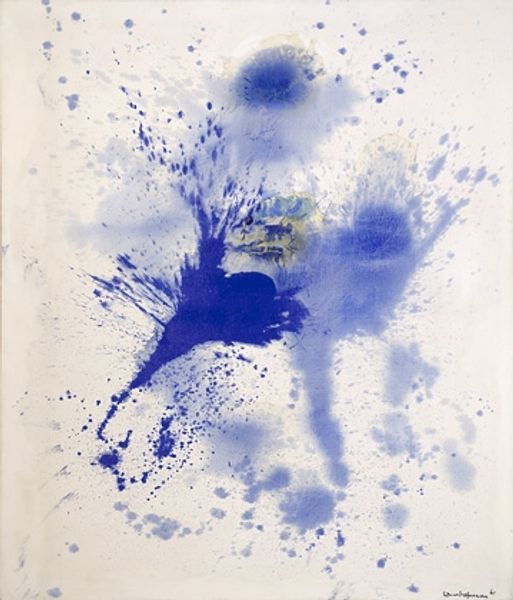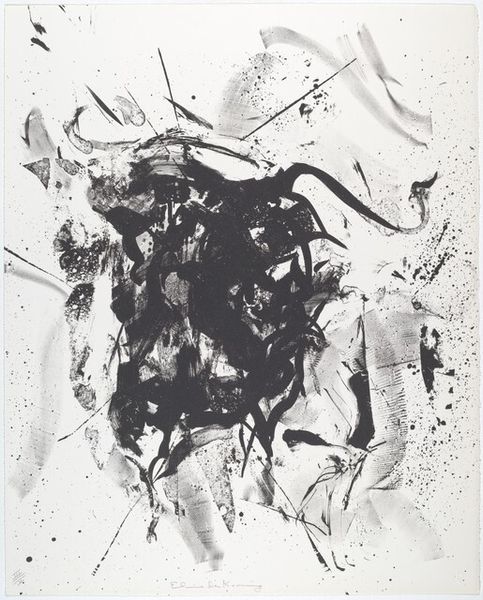
Dimensions: 213 x 182 cm
Copyright: Hans Hofmann,Fair Use
Curator: This is Hans Hofmann's "Don Quixote," created in 1963 using acrylic paint and ink. My immediate impression is one of raw, almost violent energy. Editor: I see it, the concentrated darkness against that stark white ground feels rather weighty. Tell me more about this piece within the broader context of Hofmann's work. Curator: Hofmann was a key figure in the Abstract Expressionist movement. He sought to express inner emotions and experiences through color, form, and gesture. The energetic application of paint here exemplifies action painting, but distilled to stark contrast. Editor: The image also alludes to calligraphy. Is it intended to stand as an emblem? How does that link to the literary Don Quixote? Curator: The choice of Don Quixote suggests a figure tilting at windmills, an idealistic dreamer battling overwhelming forces. I believe Hofmann used this stark black figure against a field of white to symbolize the knight's lonely fight, his quixotic nature rendered in simple yet dramatic terms. Editor: So the starkness isn't just aesthetic, it reinforces the sense of isolation. The image conveys the emotional and social environment, a sense of postwar anxieties perhaps? Curator: Absolutely. After World War II, the very notion of heroism came into question, and so Quixote becomes an enduring archetype that Hofmann revisits in the era of high modernism. But he finds, in abstraction, a universal form. Editor: There is something deeply personal in this image, though it lacks a human figure depicted in detail. It's interesting to consider how such abstract form evokes specific narratives and complex socio-cultural shifts. Curator: I agree, it's powerful how Hofmann distills the essence of Quixote, that universal desire to do battle for some higher good. Editor: Yes, well said. Seeing it this way invites us to question our own internal battles and quixotic quests. It serves as a reminder of the persistence of the idealism to tilt at those windmills, metaphorically speaking.
Comments
No comments
Be the first to comment and join the conversation on the ultimate creative platform.
